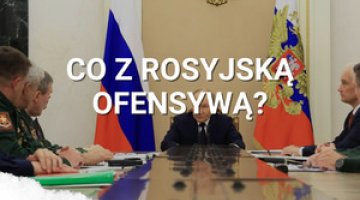Zelensky unveils the Victory Plan
On 16 October, during his address to the Verkhovna Rada, President Volodymyr Zelensky unveiled the principles of the so-called Victory Plan, which aims to persuade the West to increase military and financial support for Ukraine in its war with Russia. The plan has five points, and its implementation requires support from Western allies, particularly the United States.
The first point calls for an immediate invitation for Ukraine to join NATO. The second proposes increasing Ukraine’s arms production and lifting the ban on conducting missile strikes on military targets within Russian territory. The third involves the deployment of a ‘comprehensive non-nuclear strategic deterrence package’ in Ukraine to effectively deter Russia from further aggression. The fourth envisages signing a special agreement with Western partners regarding the protection and utilisation of strategic mineral resources located in Ukraine. The fifth includes an offer to deploy Ukrainian troops instead of US forces in military bases in Europe. Points two, three, and four reportedly include classified annexes.
The presented principles of the Victory Plan, which the Ukrainian leadership has been advocating for two months, do not introduce any new concepts but are a continuation of Kyiv’s repeatedly expressed expectations that the West should increase its military support for Ukraine. The initiative reflects Ukraine’s unwavering determination to end the conflict on its own terms, in accordance with the so-called ‘peace formula’, which includes the objective of maintaining the country’s territorial integrity within its internationally recognised borders and full sovereignty. Ukraine hopes that support from the West and the implementation of the Victory Plan will persuade Russia to enter into negotiations.
Commentary
- Aware of the international community’s growing war fatigue, Kyiv is adopting a new narrative and political framework to underscore the need for increased Western military and financial assistance to Ukraine. Aside from proposals for economic and military cooperation with Western countries, the Victory Plan’s principles do not differ significantly from the proposals voiced thus far. Ukraine’s intention to make the prospect of ending the conflict by the end of 2025 contingent on Western support for the plan should be viewed as an attempt to secure the widest possible international backing for its implementation. Emphasising the dangers of refusing to support Kyiv serves a similar purpose. Such a decision could have far-reaching consequences – a Russian victory could embolden other countries to pursue wars of aggression, particularly in regions such as the Indo-Pacific, the Persian Gulf, and Africa. Zelensky is exerting pressure on the West by stressing that the costs of Ukraine’s defeat would be substantial, while the implementation of the Victory Plan could prevent this scenario from unfolding.
- The decision to unveil the Victory Plan at the Verkhovna Rada was motivated by the intention to sustain the president’s approval rating. During his intensive diplomatic campaign in the US and Europe over the past two weeks, the initiative failed to secure the support the president had anticipated from key Western politicians (including the US presidential candidates Donald Trump and Kamala Harris). Consequently, Zelensky will seek to capitalise on the lack of support for the plan by attempting to blame the West, which is reluctant to provide Kyiv with adequate military assistance, for the deteriorating situation on the front. This is illustrated by the fact that the plan contains proposals concerning an invitation to join NATO and the deployment of conventional weapons in Ukraine. It appears that Kyiv is aware its attempts to secure support for the plan’s implementation may fail. Therefore, it intends to present this potential outcome as an argument in the internal debate to demonstrate that the West has allegedly ‘betrayed’ Ukraine.





